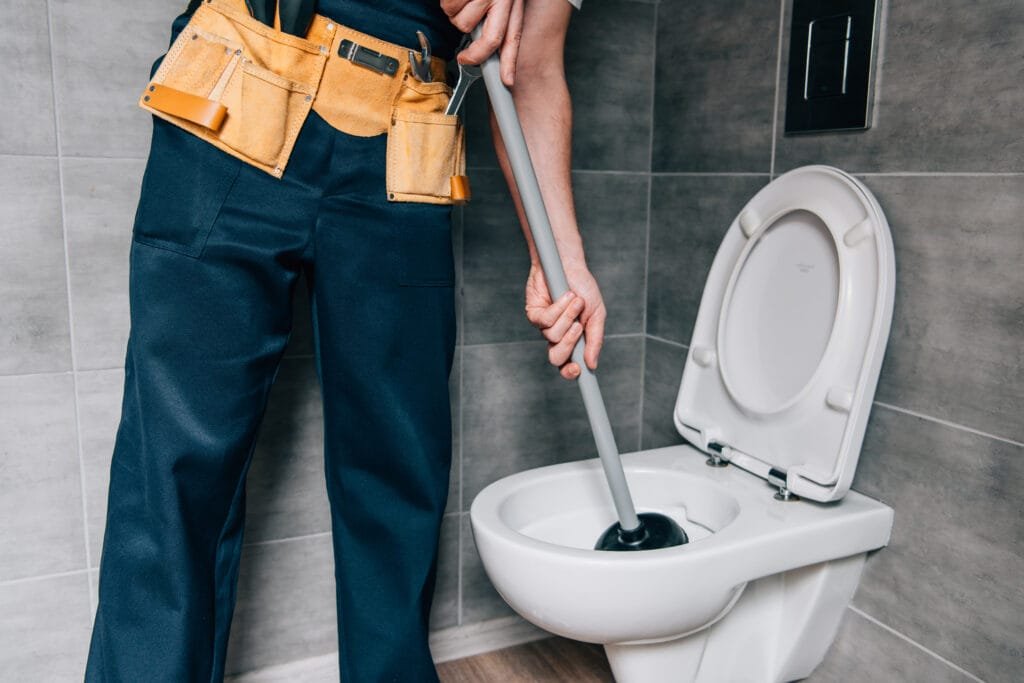Maintenance: The Time Drain
An Inside Look at the Daily Grind of Owning Single-Family Rentals
10-15 hours annually dealing specifically with clogged or malfunctioning toilets


embedpress domain was triggered too early. This is usually an indicator for some code in the plugin or theme running too early. Translations should be loaded at the init action or later. Please see Debugging in WordPress for more information. (This message was added in version 6.7.0.) in /home/u919907798/domains/soldatonce.com/public_html/wp-includes/functions.php on line 6121

When people think of landlords, the image of a wealthy property owner collecting rent checks often comes to mind. But for many landlords—especially those who own just a handful of single-family homes—the reality is far less glamorous. These “tired landlords” are the backbone of the housing market, providing rental options to millions of families. However, their daily struggles are often overlooked.
Most landlords in the U.S. are not mega-corporations; they’re everyday people who own one or two properties. According to the U.S. Census Bureau, over 70% of rental properties are owned by individuals, not companies. These landlords often manage their properties themselves, juggling maintenance, tenant relations, and financial planning.
While the phrase “unclogging toilets” is often used humorously to describe a landlord’s work, the time spent on maintenance is no joke. A recent study by the Rental Housing Journal found that landlords spend an average of 8 hours per week on property maintenance and tenant issues. For a single-family property owner, this can include:
The financial side is another source of stress. Data from the National Apartment Association shows that 20-30% of tenants in single-family rentals pay their rent late at least once a year. For landlords, this means spending extra time chasing payments, issuing late notices, or, in extreme cases, filing for eviction.
Additionally, landlords often bridge the financial gap when rent isn’t paid on time. A 2023 survey by Avail (a property management platform) revealed that nearly 50% of small landlords rely on rental income to cover mortgage payments. This dependency forces them to dip into personal savings when tenants fall behind, creating a cycle of financial strain.
Landlords face several lesser-known challenges that don’t make headlines:
While tenants may see landlords as faceless figures, many landlords develop personal relationships with their tenants. They often accommodate special requests, grant leniency for late payments in emergencies, or even pay for small repairs out of pocket to maintain goodwill.
But this level of involvement can backfire. For instance, a 2022 survey by the Urban Institute found that 30% of small landlords delay rent increases to avoid burdening tenants, even at the expense of their own bottom line.
With rising property taxes, stricter regulations, and increasing maintenance costs, many landlords are questioning whether the effort is worth the reward. Some are selling their properties to larger investment groups, reducing the availability of single-family rentals.
For those who choose to stay, adopting technology and outsourcing some tasks can help lighten the load. Platforms like Avail, Buildium, and Cozy simplify rent collection, tenant screening, and maintenance requests, giving landlords more time to focus on other priorities.
The life of a small landlord is far from the carefree image many envision. It’s a challenging, hands-on role that requires resilience, resourcefulness, and a strong stomach for risk. While their work often goes unappreciated, tired landlords play a vital role in providing housing for millions of people. Perhaps it’s time we acknowledge their efforts and the unique challenges they face in keeping the rental market afloat.
For landlords who find the constant demands of property management overwhelming, selling to a real estate wholesaler can be an attractive option. Wholesalers act as intermediaries, purchasing properties at a discounted price and reselling them to investors. This method is particularly appealing for tired landlords because it offers a quick and hassle-free way to offload their property without the need for costly repairs or lengthy market listings.
The primary advantage of selling to a wholesaler is speed. Traditional home sales can take months, especially if the property requires significant repairs to attract buyers. Wholesalers, on the other hand, often close deals within a matter of weeks. They typically pay in cash and purchase properties “as-is,” allowing landlords to avoid the time and expense of fixing up the home. For landlords dealing with delinquent tenants, deferred maintenance, or mounting financial strain, this can be a lifeline.
While selling to a wholesaler generally results in a lower sale price compared to listing on the open market, the convenience and speed of the transaction often outweigh the financial trade-offs for many landlords. Additionally, wholesalers often handle much of the paperwork and legal complexities, making the process straightforward and stress-free. For tired landlords ready to move on from the grind, wholesaling can provide a much-needed exit strategy, freeing them to pursue new opportunities or simply enjoy a less hectic lifestyle.


Navigating Divorce Asset Division: Why Selling to a Wholesale Investor Might Be the Right Choice
Dividing assets during a divorce can be one of the most emotionally and financially challenging aspects of the process. Property, especially a marital home, often represents the largest shared asset and can quickly become a source of conflict. If you’re considering how to handle this critical decision, selling your property to a wholesale investor might provide the simplicity, speed, and financial clarity you need during this turbulent time.
According to the American Psychological Association (APA), roughly 40-50% of marriages in the United States end in divorce, with the division of assets being one of the most contentious issues. Key statistics and trends include:
These challenges often make divorcing couples seek a fast, hassle-free solution for liquidating assets, especially homes that are in less-than-average condition or where neither party can afford to maintain the property.
While selling through a real estate agent might seem like the standard approach, it’s not always ideal in the context of a divorce. Here are some key drawbacks:
Extended Timelines
Repair and Staging Costs
Disruptive Showings
Financial Strain
For divorcing couples seeking a faster, simpler solution, selling to a wholesale investor offers several key advantages:
Wholesale buyers can close in as little as 7-14 days. This allows you and your ex-partner to finalize the property portion of your divorce agreement quickly and move forward with your lives.
Wholesale investors specialize in purchasing homes in their current condition. There’s no need to invest in costly repairs, cleaning, or staging—saving both time and money.
Unlike traditional sales, wholesale transactions eliminate the need for agent commissions (typically 5-6% of the sale price) and other closing fees, maximizing your net proceeds.
Wholesale buyers purchase properties with cash, reducing the risk of deals falling through due to financing issues. This ensures a smoother process for both parties.
With a wholesale investor, there are no showings, inspections, or negotiations to navigate. The transaction is straightforward and designed to reduce stress.
The option to sell to a wholesale investor is particularly appealing to:
While some sellers may worry about accepting a lower price from a wholesale buyer, it’s essential to consider the net proceeds after factoring in repair costs, agent fees, and holding expenses. Wholesale offers often align closely with the actual financial outcome of a traditional sale, especially for homes requiring significant work.
Holding out for potential market growth may not be practical during a divorce. The cost of waiting (in terms of ongoing expenses and delayed settlements) often outweighs any potential future gains.
Dividing assets during a divorce is rarely easy, but selling your home doesn’t have to add to the stress. A wholesale investor provides a fast, reliable, and hassle-free solution that allows you to liquidate your property quickly and fairly.
If you’re ready to move on and avoid the headaches of a traditional sale, contact a trusted wholesale buyer today. Let us help you turn a challenging situation into a smooth and straightforward resolution, giving you the fresh start you deserve.



Navigating Divorce Asset Division: Why Selling to a Wholesale Investor Might Be the Right Choice
Dividing assets during a divorce can be one of the most emotionally and financially challenging aspects of the process. Property, especially a marital home, often represents the largest shared asset and can quickly become a source of conflict. If you’re considering how to handle this critical decision, selling your property to a wholesale investor might provide the simplicity, speed, and financial clarity you need during this turbulent time.
According to the American Psychological Association (APA), roughly 40-50% of marriages in the United States end in divorce, with the division of assets being one of the most contentious issues. Key statistics and trends include:
These challenges often make divorcing couples seek a fast, hassle-free solution for liquidating assets, especially homes that are in less-than-average condition or where neither party can afford to maintain the property.
While selling through a real estate agent might seem like the standard approach, it’s not always ideal in the context of a divorce. Here are some key drawbacks:
Extended Timelines
Repair and Staging Costs
Disruptive Showings
Financial Strain
For divorcing couples seeking a faster, simpler solution, selling to a wholesale investor offers several key advantages:
Wholesale buyers can close in as little as 7-14 days. This allows you and your ex-partner to finalize the property portion of your divorce agreement quickly and move forward with your lives.
Wholesale investors specialize in purchasing homes in their current condition. There’s no need to invest in costly repairs, cleaning, or staging—saving both time and money.
Unlike traditional sales, wholesale transactions eliminate the need for agent commissions (typically 5-6% of the sale price) and other closing fees, maximizing your net proceeds.
Wholesale buyers purchase properties with cash, reducing the risk of deals falling through due to financing issues. This ensures a smoother process for both parties.
With a wholesale investor, there are no showings, inspections, or negotiations to navigate. The transaction is straightforward and designed to reduce stress.
The option to sell to a wholesale investor is particularly appealing to:
While some sellers may worry about accepting a lower price from a wholesale buyer, it’s essential to consider the net proceeds after factoring in repair costs, agent fees, and holding expenses. Wholesale offers often align closely with the actual financial outcome of a traditional sale, especially for homes requiring significant work.
Holding out for potential market growth may not be practical during a divorce. The cost of waiting (in terms of ongoing expenses and delayed settlements) often outweighs any potential future gains.
Dividing assets during a divorce is rarely easy, but selling your home doesn’t have to add to the stress. A wholesale investor provides a fast, reliable, and hassle-free solution that allows you to liquidate your property quickly and fairly.
If you’re ready to move on and avoid the headaches of a traditional sale, contact a trusted wholesale buyer today. Let us help you turn a challenging situation into a smooth and straightforward resolution, giving you the fresh start you deserve.